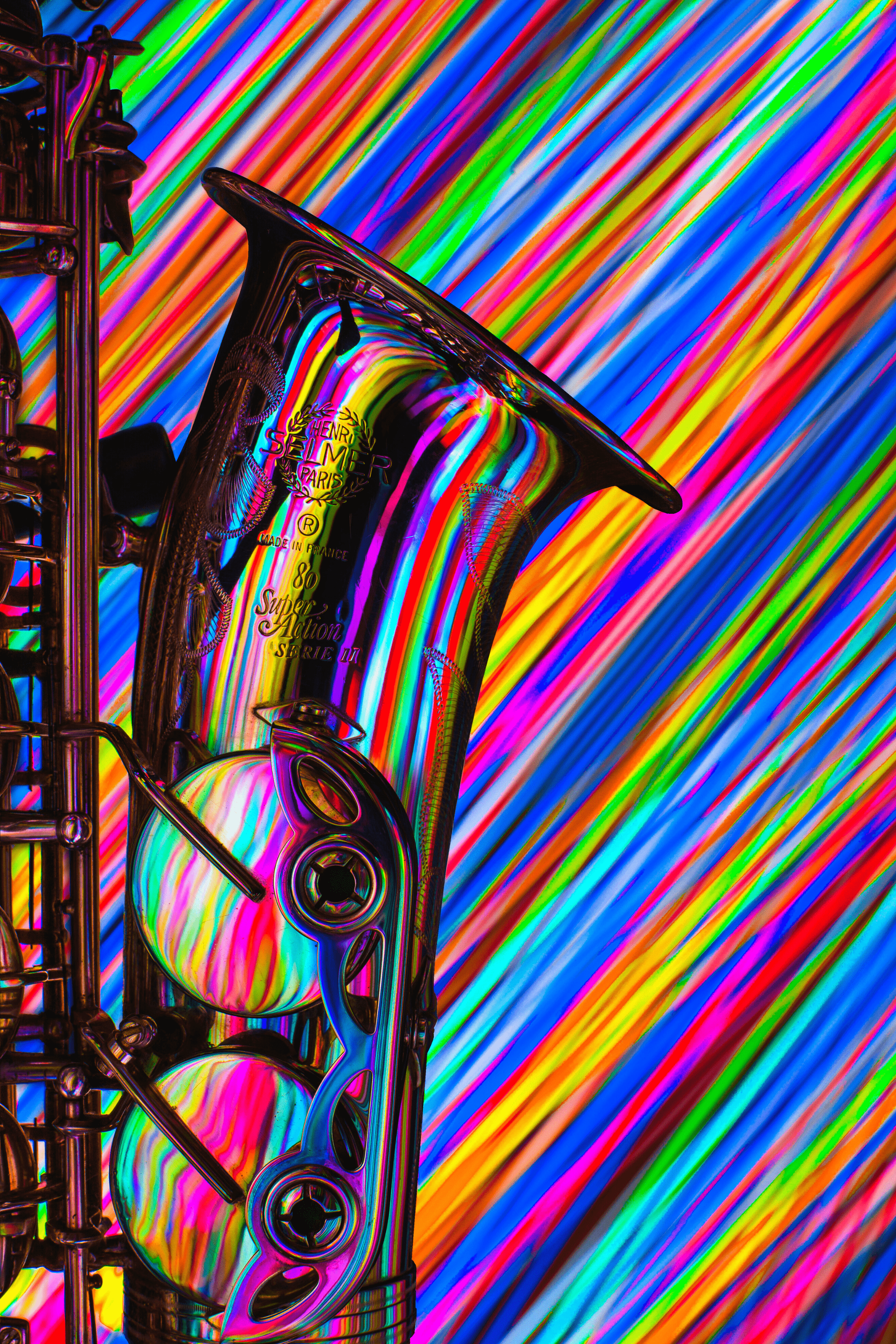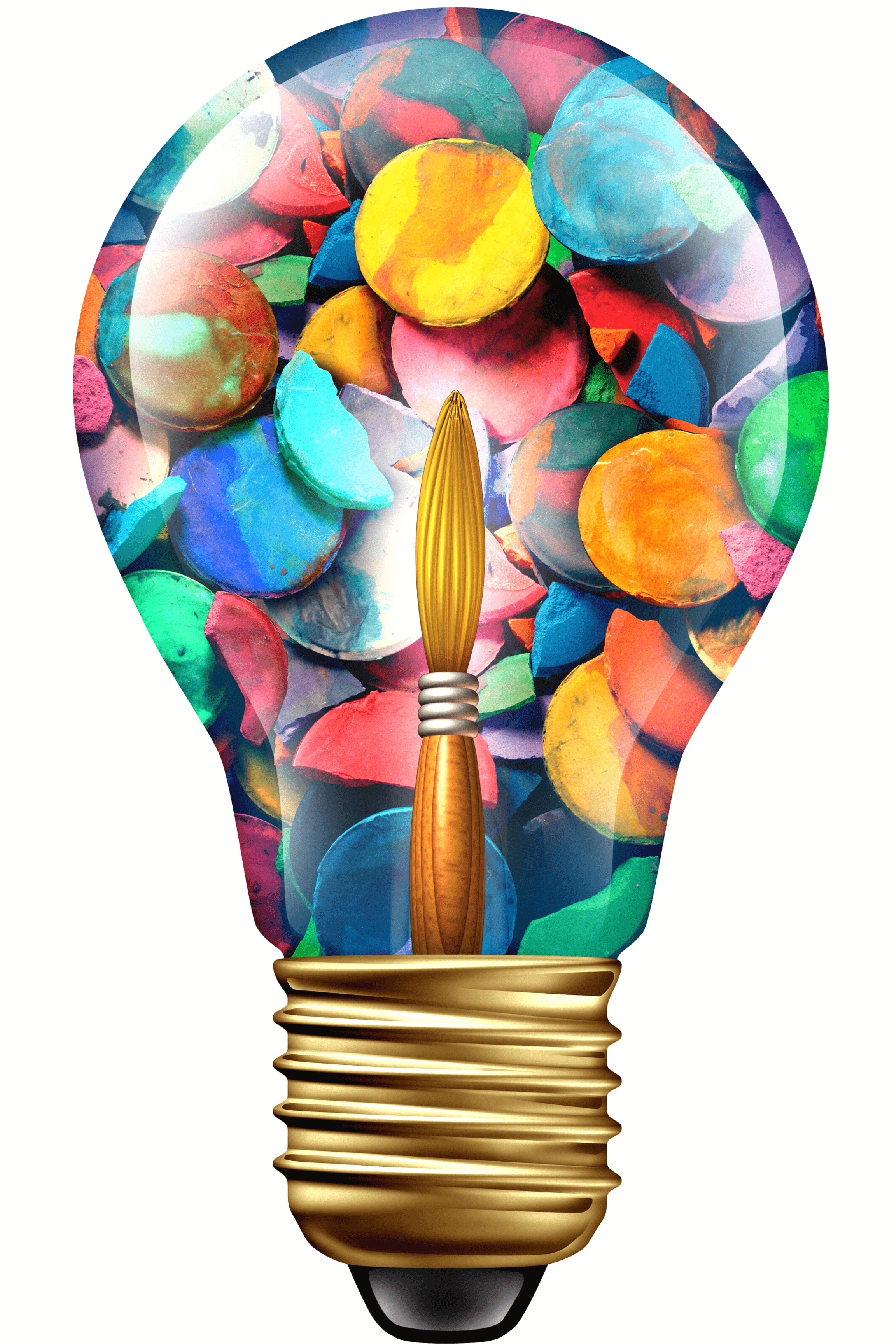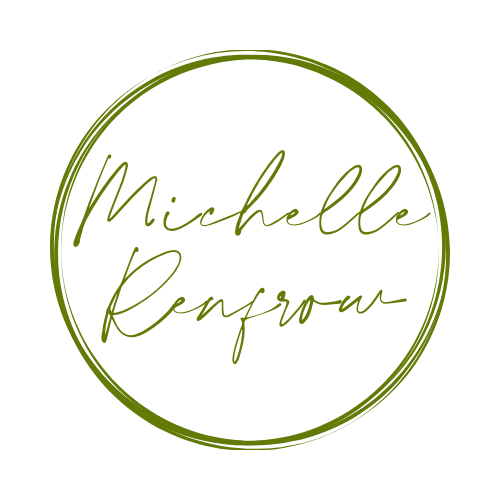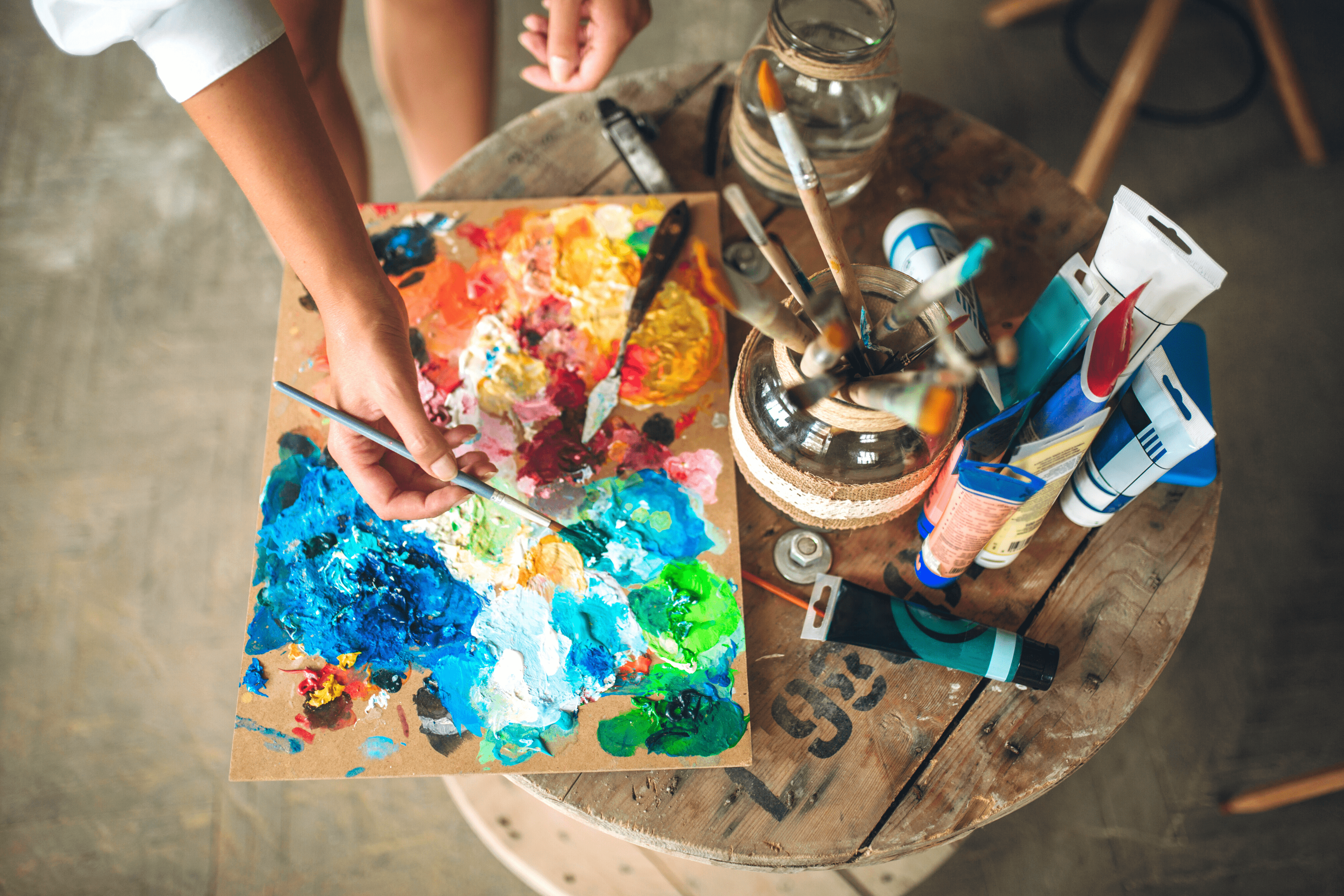Expressive arts as defined on the expressiveartssandiego.com website states that, “Expressive Arts is a discipline of helping and healing that uses the arts as its basis for discovery and change. All five disciplines of the arts: visual, dance/movement, music, drama/theater, and writing/poetry can give you a richer vocabulary to work, play and grow a life you love living.”
If you’re an artist like me we all know how important self-expression is when creating your artwork. Sometimes I pick up a pen and paper or not having a clue what I’m doing and just find myself meditatively drawing back and forth on that paper. Sometimes I pick up a brush with intention and create something that I’ve had in my head for a while. But either of these examples definitely personifies how I express myself when needed.
Expressive arts is often attached to a therapeutic style. I always have art supplies available for my clients when we’re working together. There is something therapeutic about the connection between your body and what you put down on paper or create with materials.
There are several types of expressive arts
There is the expressive art of dance, of writing, of visual arts, of drama, of music and of course other creative outlets. In a paper written by Renata Martinec she writes that, “Dance Movement Therapy is a complementary method which includes using and analyzing different aspects of body-experience and body-expression such as movement, mimics, pantomime, touch.
In Dance Movement Therapy the body is the dominant media of therapeutic process. So this kind of therapy may have a positive influence on physiological awareness, body expression of emotions, inducing unconscious impulses, and improving new strategies of behavior through exploring new patterns and qualities of movement, and integration of cognitive, emotional and behavioral aspects in person.”
Dance is a pure form of expression. Listening to the music and moving in a way that allows you to act out what you feel is a very cathartic process for some. I LOVE so much about this website’s writing about dance expressions. I had to add some of their writing here, “Dance is a fully-fledged art form, belonging to the ‘performing arts’, a goal in itself and a means of allowing a human being to express his inner feelings, thoughts and experiences.
Dance is a natural form of self-expression: the body expresses itself naturally and so therefore does the spirit. We are all free willed beings, no matter what our personal situation may be. Through dance, our body expresses how free we actually are, while also highlighting the restrictions our minds impose on it.

Dance is the art form in which human movement becomes the medium for sensing, understanding, and communicating ideas, feelings, and experiences. Dance has its own content, vocabulary, skills, and techniques, which must be understood and applied to be proficient in the art. The elements of dance are the fundamental concepts and vocabulary for developing movement skills as well as understanding dance as an art form.All these elements are simultaneously present in a dance or even in a short movement phrase.
But is this the only ‘use’ of the art forms? Their “higher expression” in the performing arena? Or is it the time to reconnect ourselves to our bodies and come back to dance as an integral part of our life?
In ancient times, people used to constantly dance, since dance has always been one of the intrinsic expressions of human beings. Natural events, community gatherings, family moments, war and peace, the seasons of the year… – all these were moments and events to be expressed through collective, family and individual dances. Dance is still present in many people’s daily life, especially in rural areas.
Visual Arts as expressive art
One of my favorite websites is verywellmind.com. They have great articles and are informative and entertaining. They do a good job of outlining the various expressive arts.
For art therapy, they say, “This approach involves utilizing the visual arts—such as drawing, painting, and sculpting—to work through emotions, thoughts, or experiences.”
Art is so meditative and expressive. Think back to famous artists we know and their works of art. Vincent Van Gogh was a troubled artist whose work soothed him during emotional bouts and gave him solace.
He literally painted the landscapes he saw while in an asylum. The artist Francisco de Goya, had severe illnesses both medical and mental that cause suffering.
He was prone to depression, mood swings and hallucinations. We know that he used art as a way to cope with all his sufferings and he even wrote in a letter that one of his paintings was a way for him to “occupy his imagination, mortified in consideration of my life.”
Other artists like Edvard Munch, Frida Kahlo, and Mark Rothko most likely suffered from mental health problems during their lives. The reflection of their struggles and mental state is apparent in their work in various ways.
Other forms of expressive arts include Music. I work with middle school girls and we make a playlist of all the female empowering songs or artists we admire. It’s our “slay it” playlist and we use it to build us up when we need it. Music has that power. Eric Clapton wrote a song when his young son passed away that always brings me to tears when I hear about it. Music has the power to ease anxiety and improve our mood. It’s cathartic to write it, play it or listen to it.
The power of the written word as an expressive art
The last expressive arts technique I want to outline is creative writing. Poetry, short stories and novels. Words that just pay down on paper for no one but ourselves and words that become something shared with the world.
In our digital age, starting an online blog is just simple. You don’t need fancy bells and whistles to start a blog.
Just something to write your words on an access to the internet. Writing involves letting you explore your thoughts and emotions. You can write in a journal, about your life, your thoughts or made up stories that entertain you.
They can be fictional and fun or real and raw. However you do it, the studies have proven writing gets things out.
Expressive arts are all around you. The next time you see a piece of art made by a local artist, ask about its origin. Question why it was made or what was the motivation behind it.
Next time you are struggling ask yourself what kind of expressive art style could you try to give you some stress relief.
Check it out and see how it works for you. Happy arting!


